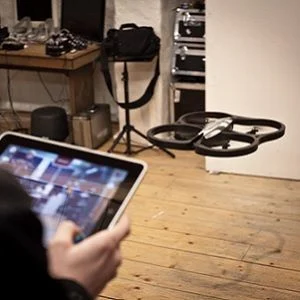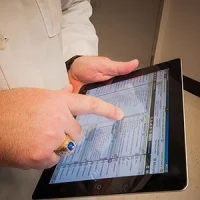A University of Illinois researcher has received a $1.5 million grant from the National Science Foundation to create drones that could perform small household chores, like retrieving a bottle of medicine from another room. This kind of innovation becomes more important given rapid growth in the elderly population especially in the developed world.
The researcher, Dr. Naira Hovakimyan, believes that drones not only will be safe, but will become an everyday fixture in eldercare within a decade or two. “I’m convinced that within 20 years drones will be today’s cellphones,” the robotocist said.
Such devices could bring medicine to patients, help people do things around the house that their health would make difficult and more, according to Dr. Hovakimyan. In her lab, she has begun experimenting with small and large drones. She believes that drones could ultimately be used to perform all manner of household chores, like reaching under a table to grab an object, cleaning chandeliers and weeding the lawn.
Drones already show potential for use in some healthcare situations. For example, in June an annual remote clinic held in Virginia received medical supplies via drone. Thus, instead of waiting for days to get their prescriptions, patients were able to receive them much more quickly.
See Also: Transporting Blood Samples to Labs via Drones?
Dr. Hovakimyan's research is just one example of many approaches being studied to use technology to help the elderly care for themselves. Roboticists and other experts predict that a new wave of advances in computerised, robotic and web-based technologies will be available in coming years to help older people stay at home longer.
Tandy Trower, a former Microsoft software designer, is working on a robot that can serve as a mobile companion, as well as monitor its owner's health. With cameras, radar, microphone, speaker, a tablet interface and a movable tray, the the four-foot-tall robot may also be able assist with tasks like keeping track of medicine intake. Its screen could also be used for video conferences with physicians and other healthcare providers.
Mr. Trower said that the science-fiction future of eldercare robots is closer than many people believe.
“Rather than seeing the train in the distance, we’re seeing the light shining in our face right now,” he said.
Source: New York Times
Image credit: Flickr.com
The researcher, Dr. Naira Hovakimyan, believes that drones not only will be safe, but will become an everyday fixture in eldercare within a decade or two. “I’m convinced that within 20 years drones will be today’s cellphones,” the robotocist said.
Such devices could bring medicine to patients, help people do things around the house that their health would make difficult and more, according to Dr. Hovakimyan. In her lab, she has begun experimenting with small and large drones. She believes that drones could ultimately be used to perform all manner of household chores, like reaching under a table to grab an object, cleaning chandeliers and weeding the lawn.
Drones already show potential for use in some healthcare situations. For example, in June an annual remote clinic held in Virginia received medical supplies via drone. Thus, instead of waiting for days to get their prescriptions, patients were able to receive them much more quickly.
See Also: Transporting Blood Samples to Labs via Drones?
Dr. Hovakimyan's research is just one example of many approaches being studied to use technology to help the elderly care for themselves. Roboticists and other experts predict that a new wave of advances in computerised, robotic and web-based technologies will be available in coming years to help older people stay at home longer.
Tandy Trower, a former Microsoft software designer, is working on a robot that can serve as a mobile companion, as well as monitor its owner's health. With cameras, radar, microphone, speaker, a tablet interface and a movable tray, the the four-foot-tall robot may also be able assist with tasks like keeping track of medicine intake. Its screen could also be used for video conferences with physicians and other healthcare providers.
Mr. Trower said that the science-fiction future of eldercare robots is closer than many people believe.
“Rather than seeing the train in the distance, we’re seeing the light shining in our face right now,” he said.
Source: New York Times
Image credit: Flickr.com
Latest Articles
healthmanagement, robotics, technology, eldercare, robot, innovation, ageing
A University of Illinois researcher has received a $1.5 million grant from the National Science Foundation to create drones that could perform small household chores, like retrieving a bottle of medicine from another room. This kind of innovation becomes










